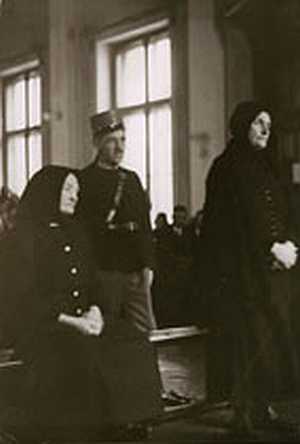★★★
“When the Blue Danube turned red…”
 You wouldn’t know it to look at the sleepy Hungarian village of Nagyrév [population: 872], but there was a time between the world wars when this was the murder capital of the world. Between 1914 and 1929, an estimated three hundred people were poisoned to death, using arsenic obtained by boiling down flypaper. The great majority of the murders were committed by local women, who wanted rid of their husbands; the local midwife, Julia Fazekas, was the source of the lethal materials. This was in an era when divorce was all but impossible, and many marriages were arranged; Julia offered a quick and painless (for the wife!) escape from a life of abuse and a loveless relationship. Since she was the closest the village had to a doctor, and her cousin was in charge of filing the death certificates, she and her accomplices got away with their crimes.
You wouldn’t know it to look at the sleepy Hungarian village of Nagyrév [population: 872], but there was a time between the world wars when this was the murder capital of the world. Between 1914 and 1929, an estimated three hundred people were poisoned to death, using arsenic obtained by boiling down flypaper. The great majority of the murders were committed by local women, who wanted rid of their husbands; the local midwife, Julia Fazekas, was the source of the lethal materials. This was in an era when divorce was all but impossible, and many marriages were arranged; Julia offered a quick and painless (for the wife!) escape from a life of abuse and a loveless relationship. Since she was the closest the village had to a doctor, and her cousin was in charge of filing the death certificates, she and her accomplices got away with their crimes.
All good things must come to an end, however. It’s unclear what triggered police action, but Fazekas knew the game was up, and by the time the police knocked on her door, she’d used her own poison to commit suicide. 26 of her associates, however, were taken to court; eight were sentenced to death, seven to life imprisonment and the remainder to various terms in jail. Eight decades later, Bussink returned to the village, and found some inhabitants still alive, who were around at the time, such as the 93-year old Rosika, in whose pantry one of the murderers hung herself from a nail. Her family then used the nail to hang bacon up.
It’s an not uncommon moment of gallows humour in the film (which puts the death-toll lower, at “only” 140). While Bussink initially met some resistance from the locals, they seem happy here to open up to her; the women, in particular, view past events with phlegmatic resignation. Maybe there’s something about Hungarian ladies; see also Vera Renczi, who murdered 35, including husbands, lovers, and a son early in the twentieth century, and of course, Countess Erzsebet Bathory. However, the film never really does more than scratch the surface, and the running-time is padded unnecessarily by shots of the local countryside, rather than providing more historical background. There’s a pointed, if very clumsy, allusion to modern times, with a local folk-dance club discussing the problems they have with their husbands.
The overall effect is to open the door on a largely-forgotten corner of murderous history, but Bussink doesn’t shine much light into the dark corner. There was word of a movie based on the topic, to star Helen Mirren, which shifted the location from Hungary to Yorkshire, with Anna Friel and John Hurt also involved, and Jon Sommersby Amiel as the director. [Curiously, Friel recently played Countess Bathory in another film] That was first announced in August 2006, but IMDB still shows it as “in development”, so who knows. I suspect the Hollywood fantasy will be nowhere near as bleakly murderous as the reality, somehow.




